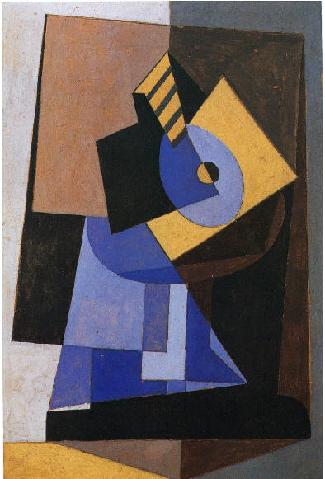Recently I enjoyed a discussion concerning Picasso’s draftsmanship with an art historian (on the way to Jerry Day, of all things!). Afterwards, once my thoughts had coalesced, I jotted them down and sent them off to him as well as to another art historian. Having not heard back from either of them in over a month, I started feeling ignored. Is it just me, or don’t you just hate it when no one pays you attention? So in utter desperation, I thought I might run this by you, on the outside chance that you might want to weigh in.
My conversant, Tom, had held that the measure of an artist’s draftsmanship is how accurately and precisely he mimics the physical world in his art. In his opinion, Picasso was pretty good, but the greats were da Vinci, Michelangelo, and some other Italian I had never heard of. (Now that I’ve looked up Italian draftstmen, I think he said Correggio.) Despite his professorial credentials and my lack thereof, I nonetheless brazenly floated the following trial balloon. I offered, why not add a second parameter to evaluate the draftsmanship of the modern/contemporary artist, not in lieu of his accuracy and precision, but in addition to it? To introduce this concept, I first have to trot out the hackneyed 1934 Picasso quote (but my reason for invoking it is atypical, as you shall see): “Formerly pictures used to move towards completion in progressive stages. Each day would bring something new. A picture was a sum of additions. With me, picture is a sum of destructions. I do a picture, then I destroy it.”
Without belaboring the quote, no doubt fodder for another lively discussion, I’ll get right to my point. Many, and probably most, modern and contemporary artists simplify their representations of the physical world, at least in the sense that they strip away detail. But what often results is not only a simplified but also a misshapen representation. Of course the misshapen forms can be intentional, certainly in Picasso’s hand. But all too often the result seems imperfect and weak, born perhaps of an admirable creative impulse yet marred by poor execution. Picasso on the other hand could pare away detail wholesale, yet what was left not only retained the essence of the object, but often even brought its essence into stark relief. And when he succeeded–which was most of the time–the form that emerged from the scrap heap was perfect, wondrous, bristling with creativity. I need not illustrate this point, since innumerable examples spring to mind, no doubt in your mind as well as mine.
Not so with most of the other so-called modern masters. Take Chagall. He gets many points for whimsy and creativity, and of course for his use of color, but his figures seem all wrong. They leave the impression that he couldn’t draw if his life depended on it.
Fine, you say. But, you ask, what does any of this have to do with draftsmanship? In so doing, you have brought me full circle to my original point: It is only the master draftsman who can strip away detail and invent new form without damaging the subject. In Picasso’s hand, the line of the artwork–and therefore the essence of the object–remain intact, enhanced even. In this sense, Picasso’s draftsmanship is unparalleled.
